Margaret Rait - Whaler
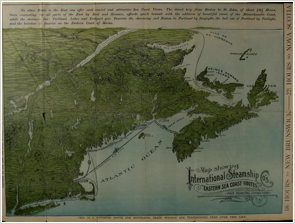
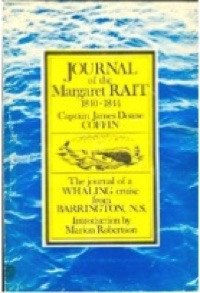
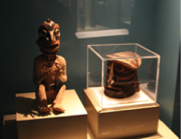
© Jean Hervé Daude
The Margaret Rait was a sturdy three-masted barque of 308 44/94 tons burden built in St Andrews, New Brunswick in 1831 by George Walker for the leading merchant and ship owner James Rait of St Andrews and Saint John, who probably named her after his wife. She was a one-decked vessel with beams permanently placed across the breadth of her hull six feet below her deck, with planks in readiness for a second deck. Constructed of black birch, pine, spruce and hackmatack, the Margaret Rait was a square-sterned, carvel-built vessel with a standing bowsprit, a figure head of a woman’s bust, and without galleries. She was 99’ 6” in length with an aground keel for tonnage of 82’ 7”, and measured 26’ 6” at her main wales with a draught of 16’.
In May 1832 James Rait sold the Margaret Rait to Charles Cole Stewart of Saint John, New Brunswick who installed the lower deck and re-registered her (NS043) as a two-decked whaler of the port of St John. Stewart appointed a new ships-master, Captain James Mackie to succeed her captain Charles Rait (possibly a brother of James) and later in the year the vessel began her first inter-ocean whaling voyage. It seems the Margaret Rait was a proven money maker, and the goal of the owners was always to get her refitted and dispatched to the whaling grounds without delay.
The Margaret Rait undertook five inter-ocean whaling voyages under the ownership of Charles Cole Stewart, leaving from and returning to St John. These were:
Departing 26 October 1832 - destination the South Atlantic under master Brock, (nominal master James Mackie) - and returning 13 May 1834 with 250 bbl of sperm oil, 1050 bbl of whale oil and 12,000 lbs of baleen.
Departing 30 July 1834 - destination the South Atlantic and Indian Ocean under a series of masters - Charles H. Pease (stricken with severe illness), Benjamin Rodman Carpenter Wilson (left), E. Boston (replacement) and James Mackie (nominal master) and returning 7 May 1836 with 120 bbl of sperm oil and 1200 bbl of whale oil sold.
Departing 23 July 1836 - destination the South Atlantic and New Zealand under master Charles H. Pease, (nominal master James Doane Coffin ) - and returning 1 May 1838 with 50 bbl of sperm oil, 2350 bbl of whale oil and 35,000 lbs of baleen.
Departing 10 July 1838 - destination the South Atlantic, Indian Ocean and New Zealand under master James Doane Coffin - and returning 10 July 1840 with 20 bbl of sperm oil (shipped), 2320 bbl of whale oil (unspecified, and 830 bbl shipped) and 22,000 lbs of baleen, plus 7000 lbs shipped.
Departing 15 October 1840 - destination the South Pacific under master James Doane Coffin - and returning 9 June 1844 with 2200 bbl of sperm oil.
The Margaret Rait anchored off Easter Island for several days in December 1843, as the ship's log for 26 December attests. Potatoes (sweet) were acquired and two tapa artifacts (one a bi-facial head, the other a zoomorphic sea-like figure) were offered in exchange for whale blubber.
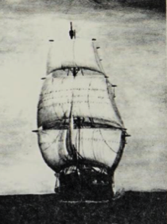
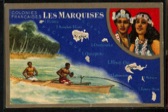
Captain James Doane Coffin became master of the Margaret Rait in July 1836, and shortly after she was purchased by the Mechanics’ Whale-Fishing Company of Saint John. Of Devonshire, England, stock, Coffin had begun his whaling career a year earlier, aged 21, when aboard the Margaret Rait he had sailed to South African waters and the Indian Ocean. As captain he criss-crossed the South Pacific and along the coasts of Australia and New Zealand searching for whales. He sailed again to the Pacific in 1838, returning to Saint John in the summer of 1840. The vessel is recorded at the Bluff, New Zealand at the end of July 1838, having sailed in July with 700 barrels of black oil. Her voyage had commenced on 8 July and she had called at Sydney on 19 February 1839 to tranship her oil for London. On 30 October 1839, the Margaret Rait, Coffin, master, of St Johns, New Brunswick, with 700 barrels of black oil left Bluff for the fishing grounds July last.
James Coffin sailed again for the Pacific in October 1840 and made a stop at the remote Pacific isle of Easter Island just after Christmas 1843 while on a voyage that lasted three years and four months. Although the crew stayed on board and did not go ashore, they nevertheless received sweet potatoes, bananas, yams and sugar cane in exchange for some of their own cargo from some of the more adventurous islanders. Captain Coffin was also given two rosewood figurines – such artifacts are now extremely rare and the pair are preserved in the St Johns museum. On this particular voyage, the Margaret Rait also called at Callao, Peru, and Talcahuano, Chile, for supplies before returning around Cape Horn to Saint John. Upon his return to Saint John in June 1844 accompanied by his wife, James Coffin sailed to England where he sold the Margaret Rait to London merchants. Captain Coffin later wrote up his exploits in his book Journal of the Margaret Rait, 1840-1844 which gives a detailed account of his voyages, places visited and whale catches. The image at right depicts the St John's whaler Margaret Rait.
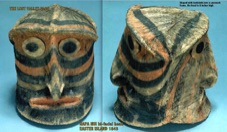

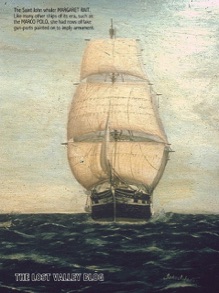
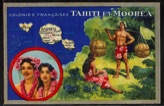
The story is told on a separate page of another whaler, from Scotland - the Raith of Leith - which was lost in the Arctic Ocean in 1819.
